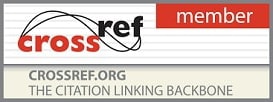Impact Factor: Impact Factor(RJIF): 5.3
International Journal of Home Science
2022, VOL. 8 ISSUE 3, PART B
Assessment of the use of delivery methods for teaching fashion illustration in Nigeria universities
Author(s): Ekumankama and Ijeoma-OJI ONU
Abstract:
The research assessed delivery methods of Fashion Illustration Curriculum for Clothing and Textiles programme of Home Economics Education in universities in Nigeria. The study adopted Research and Development (R and D) design. This study was carried out in three geo political zones in Nigeria namely, South East, South West, and North Central. The population and sample for the study were made up of eight hundred and fifty nine (859) respondents comprising Home Economics lecturers, Fine Arts lecturers and registered professional garment manufacturers in areas under study were purposely selected. Data for the research was collected using the delivery methods of Fashion Illustration Curriculum Needs Assessment Questionnaire (FICNAQ) designed by the researcher to solicit information on the delivery methods of fashion illustration that could be integrated into the Clothing and Textiles programmes of Home Economics Education in Nigerian universities. Mean scores and Analysis of Variance (ANOVA) were used to analyze the data collected from the study. Findings from the study included; 8 delivery methods (3.49±0.79), for assessing students' achievement of the fashion illustration objectives within the Clothing and Textiles program in universities in Nigeria. There are no significant differences (p< 0.05) in the mean ratings of responses of Home Economics lecturers (HEL), Fine and Applied Arts lecturers (FAAL) and Clothing Production experts (CPE) in 2 delivery methods. This implies that the null hypotheses were retained for those items. However, there were significant differences in the mean ratings of respondents in 6 delivery methods. This implies that the null hypotheses were rejected for those items. Based on the findings of the study, it was recommended among others that instructors should maximize the students' opportunities to learn by using instructional strategies that correspond to their unique learning needs in order to enhance creativity and entrepreneurship skills necessary for clothing production.
The research assessed delivery methods of Fashion Illustration Curriculum for Clothing and Textiles programme of Home Economics Education in universities in Nigeria. The study adopted Research and Development (R and D) design. This study was carried out in three geo political zones in Nigeria namely, South East, South West, and North Central. The population and sample for the study were made up of eight hundred and fifty nine (859) respondents comprising Home Economics lecturers, Fine Arts lecturers and registered professional garment manufacturers in areas under study were purposely selected. Data for the research was collected using the delivery methods of Fashion Illustration Curriculum Needs Assessment Questionnaire (FICNAQ) designed by the researcher to solicit information on the delivery methods of fashion illustration that could be integrated into the Clothing and Textiles programmes of Home Economics Education in Nigerian universities. Mean scores and Analysis of Variance (ANOVA) were used to analyze the data collected from the study. Findings from the study included; 8 delivery methods (3.49±0.79), for assessing students' achievement of the fashion illustration objectives within the Clothing and Textiles program in universities in Nigeria. There are no significant differences (p< 0.05) in the mean ratings of responses of Home Economics lecturers (HEL), Fine and Applied Arts lecturers (FAAL) and Clothing Production experts (CPE) in 2 delivery methods. This implies that the null hypotheses were retained for those items. However, there were significant differences in the mean ratings of respondents in 6 delivery methods. This implies that the null hypotheses were rejected for those items. Based on the findings of the study, it was recommended among others that instructors should maximize the students' opportunities to learn by using instructional strategies that correspond to their unique learning needs in order to enhance creativity and entrepreneurship skills necessary for clothing production.
Pages: 109-112 | 225 Views 47 Downloads
How to cite this article:
Ekumankama, Ijeoma-OJI ONU. Assessment of the use of delivery methods for teaching fashion illustration in Nigeria universities. Int J Home Sci 2022;8(3):109-112.






